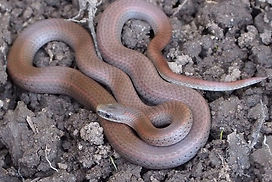
Community Science
Democratizing science and contributing towards the collective knowledge of wildlife
What is Community Science?
Community science (also referred to as "participatory science" or "citizen science") is the collection, and sometimes analysis, of data by members of the public. It provides everyone, regardless if they are a professional scientist or not, an opportunity to learn about something they are passionate about while also contributing towards our collective knowledge of wildlife. Community scientists help to advance scientific research by improving the scientific community’s capacity and broadening the geographical scope.
Read through the community science projects ThINC has on the go, and please let us know if there is something you would be interested in!

In the Air
Community Bat Program
At least eight species of bats live on the Thetis Island including the endangered Little Brown Myotis and the threatened Townsend’s Big-eared Bat. We participate in the BC Community Bat Program to educate Thetis Islanders about bat appreciation and the ecological importance of bats, what to do about bats in buildings and dead bats, and how to monitor for white-nose syndrome (a fungus deadly to bats and which has not been found yet in BC). Annual bat counts are carried out by volunteers at several locations four times a year and the information is added to the BC Community Bat Program database. Bat boxes have been installed at several locations on the island.
Got Bats?
Bats are not only fascinating, but important. To learn more about bats and to find out what to do if you have bats in a building, find a dead bat, or encounter one in your home, click here for Bat FAQs or contact our Community Bat Program Coordinator, Rob at rmwelsh@telus.net
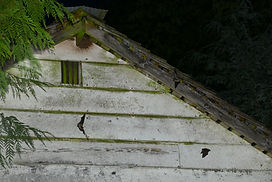
Western Screech Owl Recovery
Western screech owls were once common in the Gulf Islands but have been impacted by logging and by the immigration of the larger barred owl into the region. Specially designed nest boxes can assist with attracting the western screech owl back to an area. Our volunteers have installed approximately fifty next boxes on private properties throughout the island. The boxes are monitored for owl presence/absence twice a year using a wildlife camera on an extendable pole. The data is submitted to Madrone Ecological Consulting as part of a larger Vancouver Island/Gulf Island monitoring program.
To learn more about the this program, see the May 2023 and January 2024 issues of The Ripple.
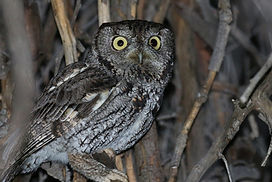
Purple Martin Recovery
In 1985, only five nesting pairs of purple martin, the largest of the swallow species in North America, were left in British Columbia. Since then, conservation efforts using specially designed nest boxes have increased the breeding population to 1100 pairs, a precarious foothold. To assist with these conservation efforts, our volunteers built and installed six special-made nest boxes on pilings in Telegraph Harbour in the spring of 2020. To our delight, purple martins quickly moved in and raised young. Monitoring is carried out yearly.


By the Sea
Forage Fish Monitoring
Forage fish such as Pacific sand lance and surf smelt are critical species at the base of the marine food web, feeding larger fish such as salmon, which in turn feed marine birds, seals, sea lions and whales. Yet forage fish have not been well-studied and the locations of beaches where spawning occurs has not been well-mapped. Our volunteer team samples local beaches each month and prepares the samples using specialized equipment. The samples are sent to the Mount Arrowsmith Biosphere Reserve Research Institute laboratory at the University of Vancouver Island where they are analyzed for the presence of forage fish embryos.
To learn more about the this program, see the January 2024 issue of The Ripple and read 'The Forager' newsletter to get hooked on forage fish citizen science!
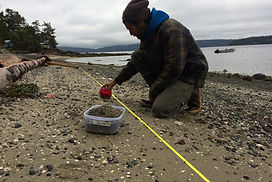
Purple Sea Star Monitoring
Sea star wasting disease has decimated populations of many species of sea star over the past few years. Under the direction of Andy Lamb, a local marine biologist, volunteers count sea stars yearly at 'The Cut' and at Clam Bay to monitor for recovery of the purple sea star.
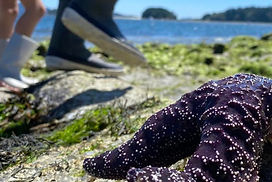
Invasive Green Crab Monitoring
ThINC and a crew of enthusiastic volunteers has partnered with Fisheries and Oceans Canada (DFO) to help track the spread of the European green crab, which has recently been spotted in local waters. Once European green crab has established a population in an area, it is practically impossible to eradicate them. However, we can limit their spread and the damage they cause through monitoring programs.
To learn more about the this program, see the May 2024 issue of The Ripple.
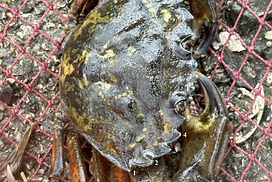

On the Land
Sharp-tailed Snake Monitoring
Sharp-tailed snakes (Contia tenuis) are small, shy snakes endemic to British Columbia and the Western United States. Adults average between 30 - 46 cm in length and are no wider than a pencil! Their small size and shy nature make them one of BC's most enigmatic reptiles, and their low and decreasing populations make them a red-listed species in BC. For several years now, ThINC volunteers have been conducting frequent surveying trips to Moore Hill during the spring and fall in hopes of learning more about the species and its life history. Photo credit: J. Maughn (2011)
